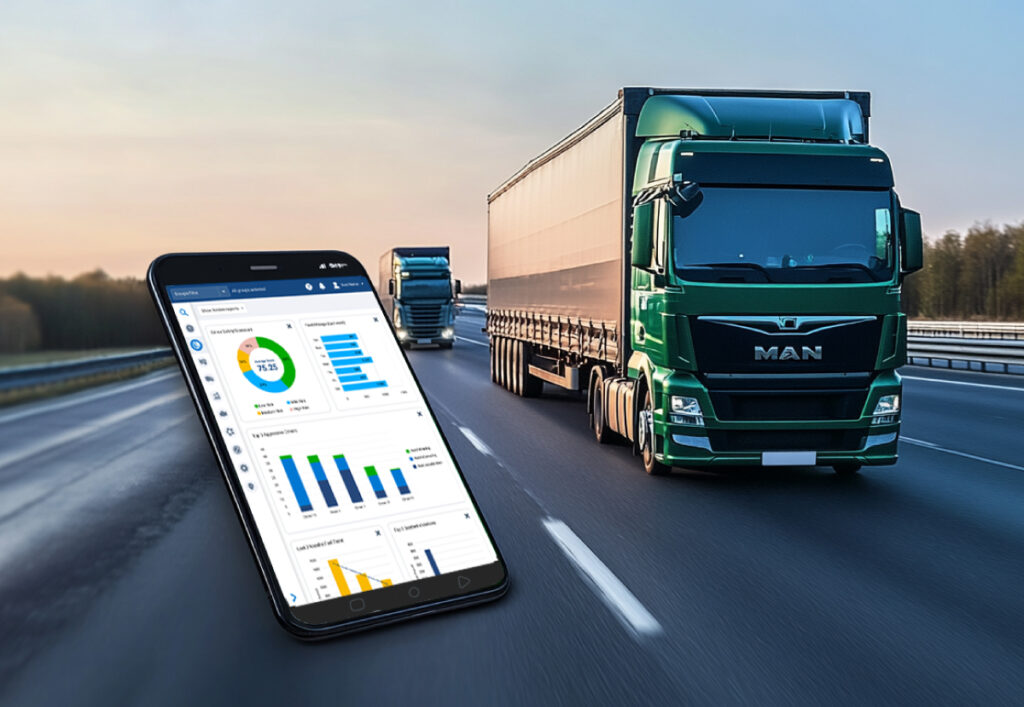
Fleet management plays a critical role in the day-to-day operations of many Australian businesses. Whether you’re running a courier service in Sydney, managing heavy vehicles in the mining sector in WA, or coordinating a trades fleet across Brisbane, having a well-managed fleet can dramatically impact your bottom line. So, what is fleet management, and why is it essential? In simple terms, it’s the system and process of managing a company’s vehicles to maximise efficiency, minimise costs, and ensure safety and compliance. This guide takes a deep dive into everything you need to know about fleet management in an Australian context.
What is Fleet Management?

Fleet management refers to the coordinated management of a company’s commercial vehicles. This includes everything from acquiring and maintaining vehicles to managing drivers, tracking vehicles in real-time, and ensuring compliance with relevant road safety and industry regulations.
It’s not just about managing a few company cars. For larger organisations, it’s a sophisticated operation involving technology, data, logistics, and strategic planning. Good fleet management can reduce running costs, improve safety outcomes, and streamline operations – all while ensuring vehicles and staff comply with Australian laws and standards.
Key Areas of Fleet Management
Vehicle Acquisition
Choosing the right vehicle for the job is the first step in efficient fleet management. This involves assessing the needs of your operations and selecting vehicles based on fuel efficiency, size, load capacity, cost of ownership, and tax or fringe benefit implications under Australian tax law.
Leasing vs buying is also a key decision – and many Aussie businesses opt for operating leases to reduce upfront costs and access the latest models.
Maintenance and Repairs
Preventative maintenance is essential to keep vehicles safe and reliable. This includes scheduled servicing, regular inspections, tyre rotations, and prompt repair of issues. In Australia, fleet vehicles must also meet roadworthiness standards – especially if used for commercial transport.
Well-maintained vehicles reduce downtime, improve fuel efficiency, and contribute to a safer driving environment.
Driver Management
Drivers are at the heart of any fleet. Managing your drivers includes recruitment, onboarding, and regular training – particularly in safety practices and fatigue management. Performance tracking, licence checks, and incident reporting also form part of a robust driver management program.
Compliance with regulations such as the Heavy Vehicle National Law (HVNL) is critical for transport operators in Australia. Businesses are responsible for ensuring drivers are fit for duty and operate vehicles safely and legally.
Fuel Management
Fuel costs are a significant expense for any fleet-based business. Fuel management involves tracking consumption, identifying inefficiencies, and finding ways to reduce usage. This may include implementing fuel cards, optimising routes to cut unnecessary travel, and monitoring vehicle idling times.
Some fleet management systems even allow you to track litres per 100km in real time, providing valuable data for decision-making.
Compliance and Safety
In Australia, vehicle compliance isn’t optional – it’s a legal requirement. From ensuring vehicles are roadworthy to meeting Chain of Responsibility obligations, fleet managers must stay across an evolving set of rules and regulations.
Key areas include:
- NHVR (National Heavy Vehicle Regulator) compliance
- Logbooks and work diary regulations
- Occupational health and safety standards
- Vehicle safety inspections and registration
Vehicle Tracking and Telematics
Modern fleet management relies heavily on GPS tracking and telematics. These tools give real-time insights into vehicle location, driver behaviour, route efficiency, and maintenance needs.
In Australia, businesses often use platforms like Fleet Complete, EROAD, and Teletrac Navman, which offer integrations with compliance reporting tools, fuel tracking, and performance dashboards.
Asset Management and Lifecycle Planning
Fleet vehicles are valuable business assets. Effective asset management means ensuring each vehicle is used to its full potential and replaced at the right time.
This might include:
- Planning for vehicle resale or trade-in before major repairs are needed
- Rotating vehicle usage to extend lifespan
- Monitoring depreciation and operational costs over time
Benefits of Fleet Management
Proper fleet management delivers measurable benefits across your business:
Lower Operational Costs: Reducing fuel consumption, preventing costly repairs, and optimising routes all contribute to significant savings.
Improved Efficiency: Fleet management systems automate tasks, enhance dispatching, and support faster decision-making.
Enhanced Safety: Monitoring driver behaviour and keeping vehicles in top condition reduces accidents and injuries.
Regulatory Compliance: Staying on top of vehicle inspections, licence checks, and industry regulations helps avoid penalties and keeps your business running smoothly.
Data-Driven Decisions: Real-time reporting and analytics enable managers to make smarter, forward-thinking choices about vehicle usage and maintenance.
Who Uses Fleet Management?

Fleet management isn’t limited to massive transport companies. It’s used by businesses of all sizes across Australia, including:
Logistics and Courier Companies – managing fast, reliable deliveries
Construction and Mining Firms – maintaining large fleets of specialised vehicles
Trade Businesses – plumbing, electrical, HVAC companies with multiple vans or utes
Government and Council Services – from rubbish collection to parks maintenance
Health and Aged Care Providers – coordinating patient transport and service vehicles
If your business relies on vehicles in any capacity, fleet management can help you operate more efficiently and sustainably.
Modern Fleet Management Solutions in Australia
Many businesses in Australia use cloud-based fleet management software to centralise operations. These platforms offer a range of features including:
- GPS tracking
- Route optimisation
- Driver behaviour monitoring
- Fuel usage tracking
- Service reminders and maintenance scheduling
- Regulatory compliance reports
Choosing the right platform depends on your fleet size, industry, and specific operational needs.
Final Thoughts
Fleet management is about more than just vehicles – it’s about running your business smarter. Whether you manage five utes or a hundred delivery trucks, understanding what fleet management is and how to apply it can give you a competitive edge.
With the right tools, systems, and strategies, you can cut costs, improve safety, and future-proof your operations. For many Australian businesses, investing in fleet management isn’t just a good idea – it’s essential.
We also provide
Telecoms Expense Management, Device Deployment, Mobile Fleet management, Telstra enterprise Mobility, Telstra mobility Managed Services.
Improve Business Core values, Business Consulting, Network Management, Telstra Expense Management and many more Services.
Frequently Asked Questions
What is fleet management in Australia?
Fleet management in Australia involves overseeing business vehicle operations to ensure efficiency, safety, and compliance with local laws. It includes vehicle acquisition, maintenance, driver supervision, route planning, and regulatory adherence under frameworks like the NHVR and Chain of Responsibility. The goal is to streamline operations, reduce costs, and ensure road safety while meeting Australian transport standards and business needs.
What is the role of a fleet manager?
A fleet manager is responsible for coordinating all aspects of a company’s vehicle fleet. This includes selecting and maintaining vehicles, managing drivers, tracking fuel usage, ensuring compliance with regulations, and improving overall operational efficiency. In Australia, they must also keep up with transport laws, vehicle safety standards, and cost control measures. Their role is crucial for reducing downtime and enhancing business productivity.
What are the components of fleet management?
Fleet management covers several core areas: vehicle acquisition, maintenance scheduling, driver management, fuel monitoring, route optimisation, compliance tracking, and asset utilisation. Each component plays a role in improving efficiency, safety, and cost control. In Australia, these tasks must align with local laws and road conditions, making technology and detailed planning essential for effective fleet operations.
What is meant by fleet management?
Fleet management refers to the strategic management of a company’s vehicles to ensure they are safe, cost-effective, and efficiently used. It involves monitoring everything from purchase and maintenance to driver behaviour and fuel use. In simple terms, it’s about getting the best value from your vehicles while meeting legal obligations and supporting your team on the road.
Why is fleet management important?
Fleet management is vital for businesses relying on vehicles because it helps control costs, reduce downtime, and improve safety. It ensures compliance with transport laws and maximises the performance of both vehicles and drivers. For Australian businesses, it also supports sustainability goals and helps navigate challenges like long distances, remote worksites, and strict transport regulations.
How does fleet tracking work?
Fleet tracking uses GPS and telematics systems to monitor vehicle location, speed, and usage in real-time. These systems can provide insights into driver behaviour, fuel consumption, and route efficiency. In Australia, tracking helps with compliance, asset protection, and reducing delivery times, especially across long-distance or regional routes. It’s a key tool in modern fleet management strategies.
What industries use fleet management in Australia?
Fleet management is used across various Aussie industries, including logistics, construction, mining, trades, government, health services, and agriculture. Any business operating multiple vehicles—whether cars, trucks, or machinery—can benefit. Proper management supports timely deliveries, staff safety, and cost efficiency, which is especially important in industries where transport is critical to daily operations.
What are the benefits of fleet management software?
Fleet management software streamlines operations by offering centralised control over scheduling, tracking, reporting, and compliance. It helps reduce paperwork, automate maintenance reminders, monitor fuel use, and improve driver accountability. For Australian businesses, such software ensures better data collection for decision-making and supports adherence to local transport regulations.
What is included in a fleet maintenance program?
A fleet maintenance program includes regular servicing, mechanical inspections, tyre checks, fluid replacements, and repairs. It also tracks maintenance history and schedules upcoming services. In Australia, staying on top of maintenance ensures roadworthiness, reduces vehicle downtime, and supports compliance with road safety laws and vehicle inspection standards.
How can businesses reduce fleet costs?
Businesses can reduce fleet costs by implementing smart strategies like route optimisation, preventive maintenance, fuel tracking, and driver training. Investing in fleet management software and vehicle tracking tools also helps cut expenses. In Australia, choosing the right vehicle types and maintaining compliance can prevent fines and improve overall fleet profitability.


